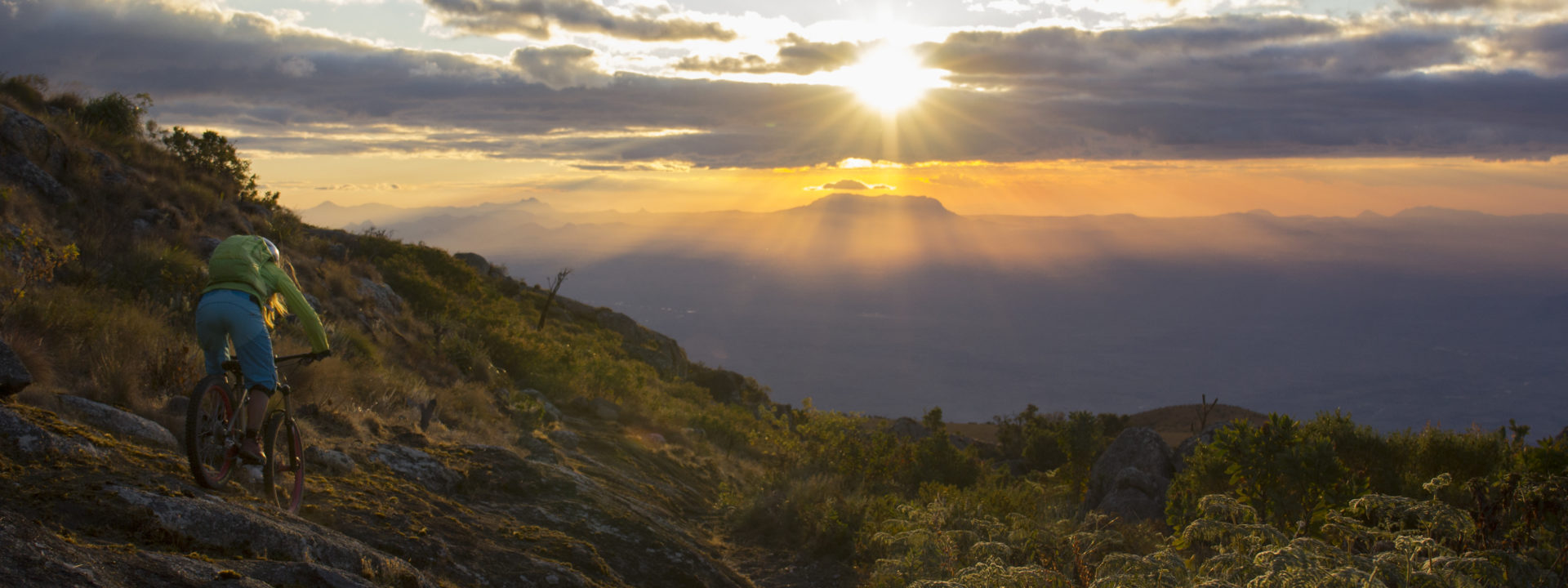
The Vertriders Axel and Sylvia venture deep into Africa to explore unridden mountainbike terrain. In southern Malawi rises the majestic Mount Mulanje above the plain, the Island in the Sky. Malawi promises to be the “Warm Heart of Africa”, and that is exactly what they find: the friendly people, curious and communicative but also very polite. And everybody is biking, the streets are packed with pedestrians and cyclists, with virtually no cars. This is Africa. Malawi is one of the poorest countries, but the people are masters of the art of living each day with a smile on their face. A travel diary…
Mulanje is not a “sacred” mountain, even though there are many legends about creatures living on the rocky plateau, Mulanje is a mountain that supports the communities living around it. It supplies water from the streams, firewood and some hiking tourism like us. We arrive at at Likhubula, our “base camp” at the foothills in the south east of Mulanje, nestled between forests and tea plantations.
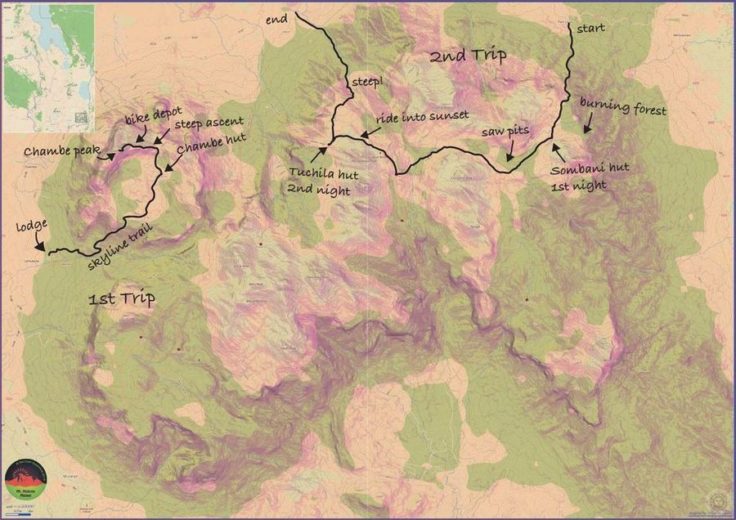
1000m of vertical rock
We hire a guide and porters for our 3-day trip into the mountain. We even hire a cook, to actually taste the flavors of the local traditional food. Together, we visit the market to buy the right ingredients for Nsima (maize porridge) with vegetable relish and chicken.
The Mulanje Massiv is about 30km east-to-west and consists of a plateau at about 2000m elevation, with a number of peaks, the highest of which is Sapitwa, at 3000m the highest point in southern Africa. In the local Chichewa language, Sapitwa means something like “do not go there”. So we won’t. Our first goal is Chambe peak with the spectacular west face, 1000m of vertical rock.

As we hike our bikes up, it looks promising. The infrastructure on the mountain is ideal, there are ten wooden huts maintained by the mountain club of Malawi (MCM). The trails are well used and perfectly trodden out. Indeed, we meet a lot of people on the path up. People are working on clearing the fire breaks, people carrying firewood down, and….planks of cedar? The Mulanje Cedar is endemic on the mountain and listed as critically endangered species. The cutting of cedar has been banned since 2007, but apparently no effective law enforcement is in place.
We ask our guide Duncan about the cedar. He tells us about the illegal sawyers and the money that people are prepared to pay for this desired timber. It is a tempting mode of income for the poor communities without an abundance of job opportunities.
We reach Chambe hut on the plateau with a brilliant view onto the south face of Chambe peak. The hut is simple but offers everything you would want: some bunk beds and a fire place. The last two cedar trees on the Chambe plateau are standing right next to the hut, well-guarded by the care taker of the hut.
Simply too steep
The next day we climb Chambe peak. The trail disappears into granite rocks and scrubs. We hike on. However, the summit turns out to be not feasible with our bikes: simply too steep. It is almost proper climbing terrain and we enjoy the contrast of activity and the panorama from the summit. On the way down, we hit some really steep lines with our bikes using the grip of the granite. Duncan is impressed. Back at the hut, the Nsima and chicken is already simmering on the fire. We do not at all regret the idea of a cook.
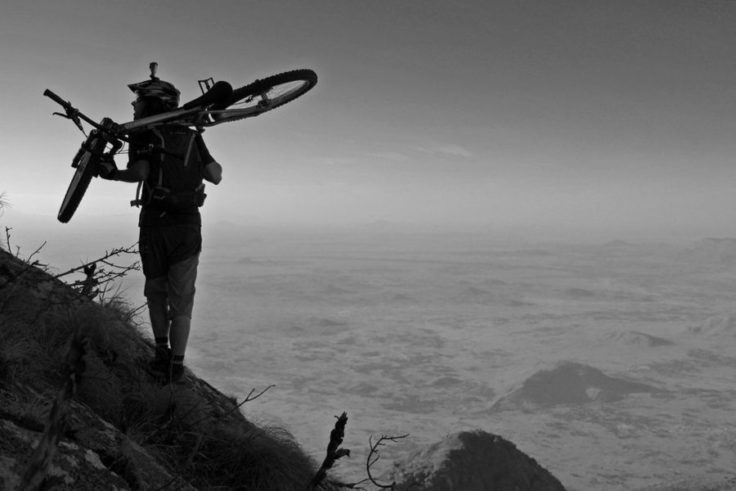
In the still fresh morning air we start our descent down Skyline path, the most direct and steepest connection back down to Likhubula. The trail offers incredible riding, perfect vertride style trialing, real technical mountainbiking that we love. We finish this grand day with a beer back at the Likhubula lodge.
Uncountable high-fives
We decide to visit the mountain a second time, this time we start at Fort Lister to explore the mountain from the north side. Again we hire Duncan and a cook and some porters. Before we head up from the forest station, around 50 children have to try out our full suspension bikes. We are fully immersed in the crowd and set off after uncountable high-fives.

The path is again well trodden; we pass one of the cedar tree nurseries, a conservation effort to grow cedar seedlings before they are planted outside, back into the ecosystem. It looks promising but Duncan tells that it does not work. After a couple of years, the young trees dry up and die. Apparently, nobody yet understands why.
The eradication of the cedar is systematic
On the plateau, again we witness the other side, the negative human impact on the mountain: burning forest (a common hunting method) and again people carrying cedar planks. We even find both hidden and quite obvious saw pits. The eradication of the cedar is systematic and happening right in front of our eyes.

We arrive at Sombani hut, a small but one of the most scenic huts. With no views of the valley, Sombani is “inside” Mulanje. There are some more people already in the hut, Scottish, English German and Swiss “Expats” that work in Malawi. We have a delicious dinner and stimulating discussions about Malawi and the world.
The next day we cross the plateau, always staying at higher altitude above 2000m. The trail sometime runs on the fire breaks and is ideal for biking. The mist rolls in and it gets chilly. We have to hike our bikes a little. As we come around one corner, the sun starts shining through and between the clouds. The last part we virtually ride into the sun set, with views of the Malawian savanna 1500m below. It’s magic. We reach Tuchila hut. The views are amazing.
We will come back – not only because of the mountain but also because of the people

For the final downhill the next day, we have two options: either down so-called elephant’s head or down Tuchila valley. The former is steep and washed out after the last rain, according to Duncan. We chose the latter.
First, it is a flat and fast ride down a fire break, but with a very well defined single track, trodden out. Then it becomes steeper and more technical, quite a challenge. We even have to hike our bikes down about a 100m before it is rideable again. All in all, a great ride and a perfect traverse of the plateau.
So we have really become enchanted by the Mulanje trails, for us it is the perfect riding terrain, with yet some more trails to explore. So we’ll have to come back, not only for the mountain but also for the people. But how about the cedar, will there still be some left, when we return.
Photogallery:
Photos: Antonio Abreu, Madproductions
































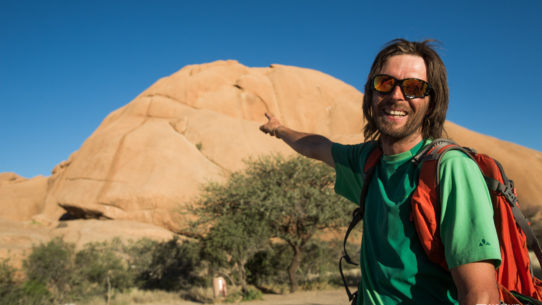
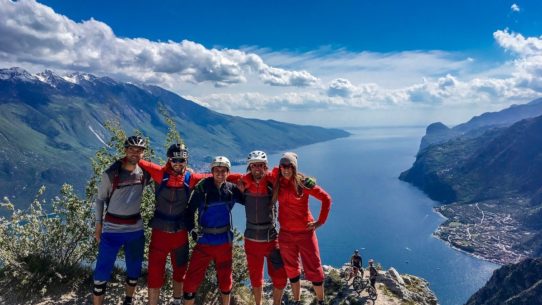
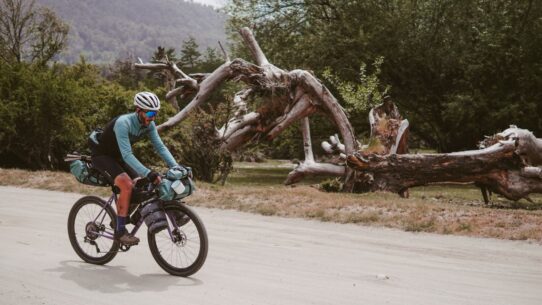
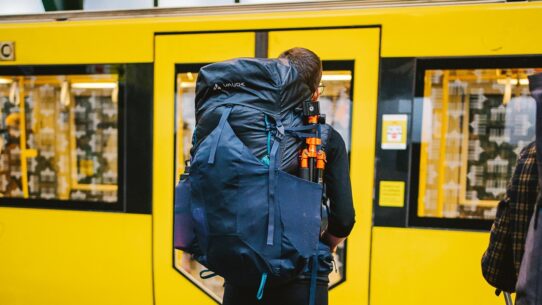
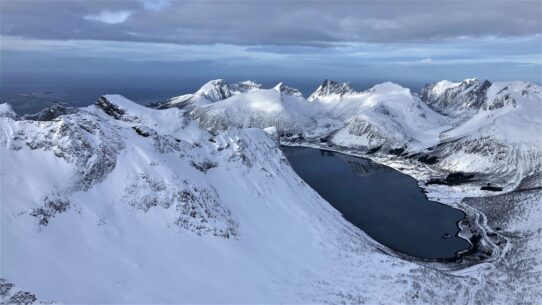

Comments